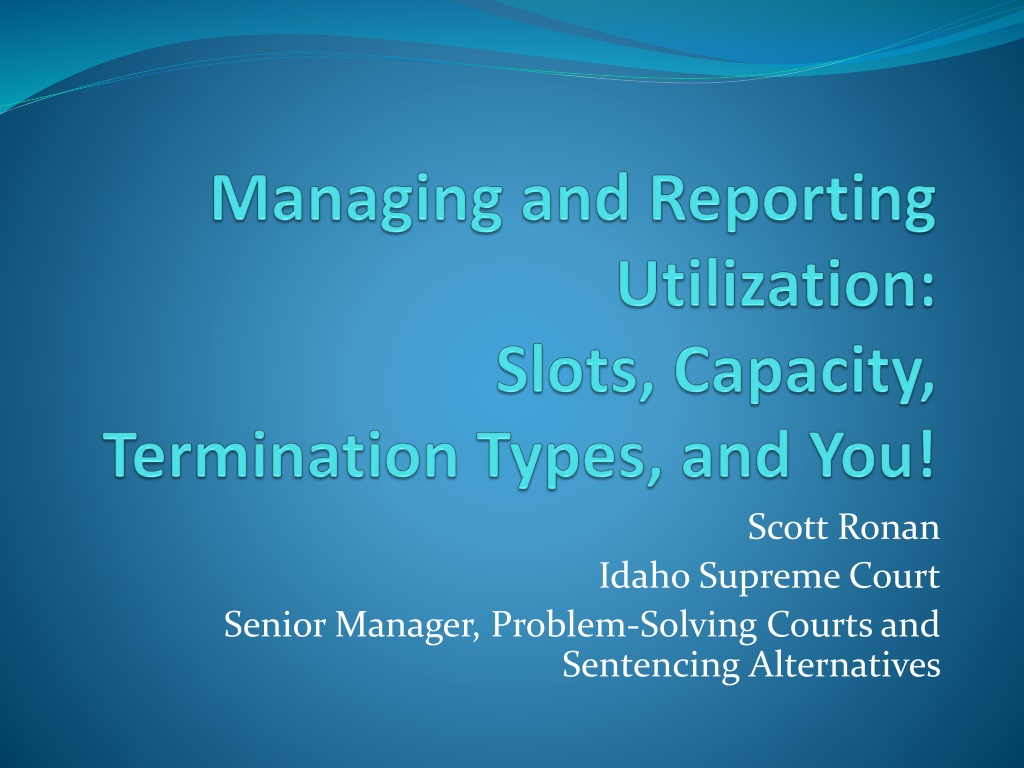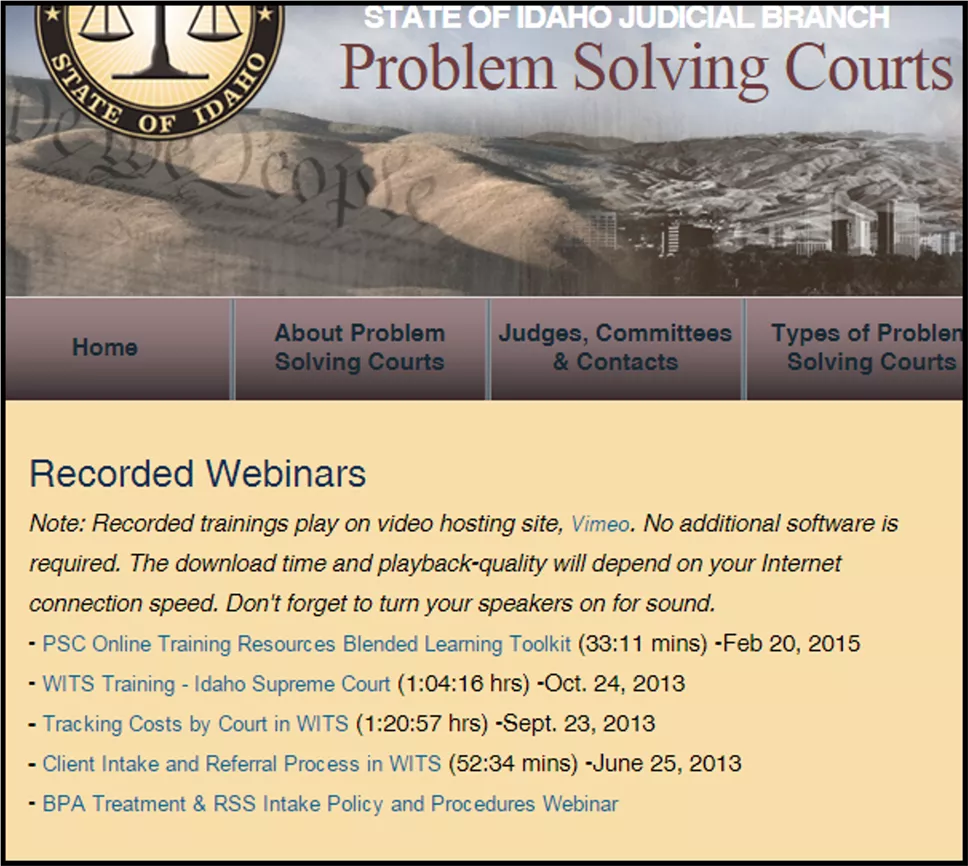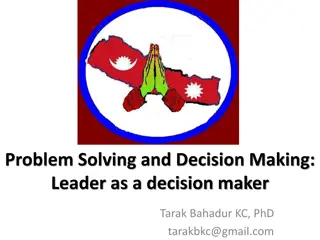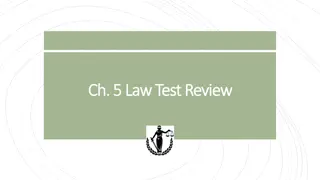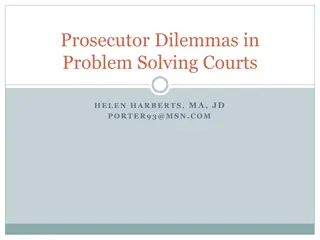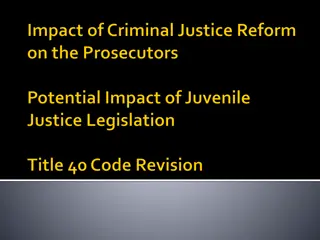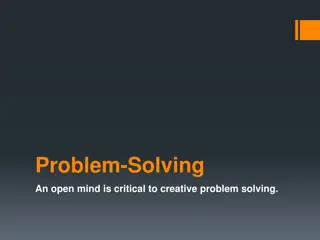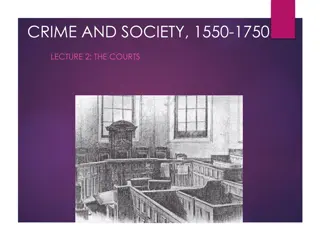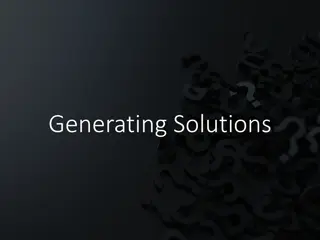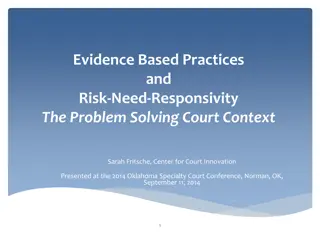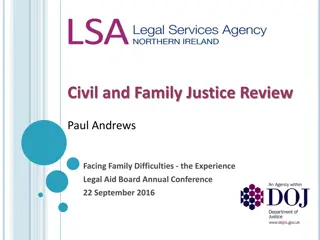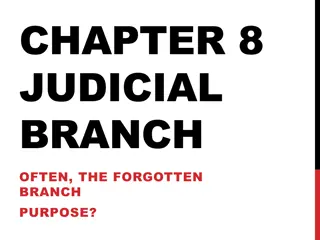Enhancing Problem-Solving Courts with Data-Driven Solutions
Scott Ronan, Senior Manager at the Idaho Supreme Court, discusses the evolution of problem-solving courts and sentencing alternatives. The need for real-time data tracking led to the development of the ISTARS drug court module and utilization reports for better evaluation and case management. Explore the transformation towards data-driven solutions and the future with Odyssey.
Download Presentation

Please find below an Image/Link to download the presentation.
The content on the website is provided AS IS for your information and personal use only. It may not be sold, licensed, or shared on other websites without obtaining consent from the author. Download presentation by click this link. If you encounter any issues during the download, it is possible that the publisher has removed the file from their server.
E N D
Presentation Transcript
Scott Ronan Idaho Supreme Court Senior Manager, Problem-Solving Courts and Sentencing Alternatives
Today Why? And what? The road so far The future! Questions?
Why? Early 2000 s the ISTARS drug court module was developed to assist in the tracking of #s in and #s out, to help courts with local ongoing case management/ staffings, and for evaluation purposes It became clear early on that although ISTARS may meet our evaluation and case management needs, but the ability to update the drug court module was contingent on time and $. In a dynamic world, we needed to be able to track several data points that changed based on our needs
Why?..... Enter the monthly utilization report Validated numbers Historical perspective for reporting (annual report to the governor/legislature) Local budget and policy analysis State budget and policy analysis
http://www.isc.idaho.gov/annuals/2014/2014_ISC_YearlyReport_ Problem-Solving-Courts.pdf
Data Elements: Court Types Termination Types Grad/Term rates DUI or Non-DUI cases Felony or Misdemeanor level # that touched the court within a given timeframe New admits in a month # last day of the month $ received from participants # drug free babies born to female participants
Utilization Questions Is it accurate? How is it used and how can I use it for ongoing or ad hoc reports? Everyone that touched the court within a timeframe (fiscal year) Graduation/Unsuccessful Termination % Drug free babies born Participant fees collected When can we stop? The future is Odyssey and the future is now!
Tracking of $ then and now Then. Utilization has been a method of calculating the usage of funds as compared to the # of participants It used to be fairly straight forward with 1 participant = approximately $4,000 of ISC treatment funds, and $400 of ISC testing funds in a fiscal year. Recession .and adjustments Alternative and additional funding opportunities Now. $ from IDVS, ITD, DHW, Federal Grants, Medicaid, etc.
Slots and Capacity So what do we do now with all the different funding sources? How do we account for our slots ? What does capacity really mean?
Conceptualization and Operationalization Slot = a space for which funds are associated that a participant may occupy. In a fiscal year, multiple participants may occupy a slot. Like a hospital bed. Used as a budget management tool for allocation by the ISC. Funds = ISC funds $4,142 per slot for treatment and $400 per slot for testing, Medicaid = $, DHW-ATR-IV = $, DHW- Misd =$, Vet Recognition Funds = $, Self Pay = $, Transportation = $, other state or federal grants = $, VA $
Conceptualization and Operationalization cont Capacity = the total number of participants that a court can manage at any one time. This is not tied to $, it is tied to caseloads and ability to be effective while serving as many people as possible.
Slots and capacity Each court should explore opportunities to take as many participants as they can handle based on their ability to supervise. Slots is only a budgeting or allocation tool, not a cap of how many participants can come into the court.
Operationalize Scenario: A Drug Court has a capacity of 25 based on the ability to manage a caseload size Treatment Funds: $82,840 for a fiscal year from the equivalent of 20 slots that are funded through ISC funds = 20 X $4,142 = $82,840 Funds via Medicaid =X$ (about 3 participants) Funds via DHW-ATR-IV =X$ (about 1 participant) Funds via the VA= X$ (about 1 participant)
Cont.. Still have a capacity of 25 Testing Funds: $400 for 20 ISC funded slots = $8,000 Self pay or a portion of participant fees= X$ Medicaid Covered Drug Testing = X$ County Contribution = X$ Other = X$?
All funding sources combined should be enough to test and treat 25 participants with some participants in earlier phases and some in later phases to balance out the impact within a given fiscal year.
Thanks! Scott Ronan Idaho Supreme Court Sr. Manager, Problem-solving Court and Sentencing Alternatives sronan@idcourts.net 947-7428
